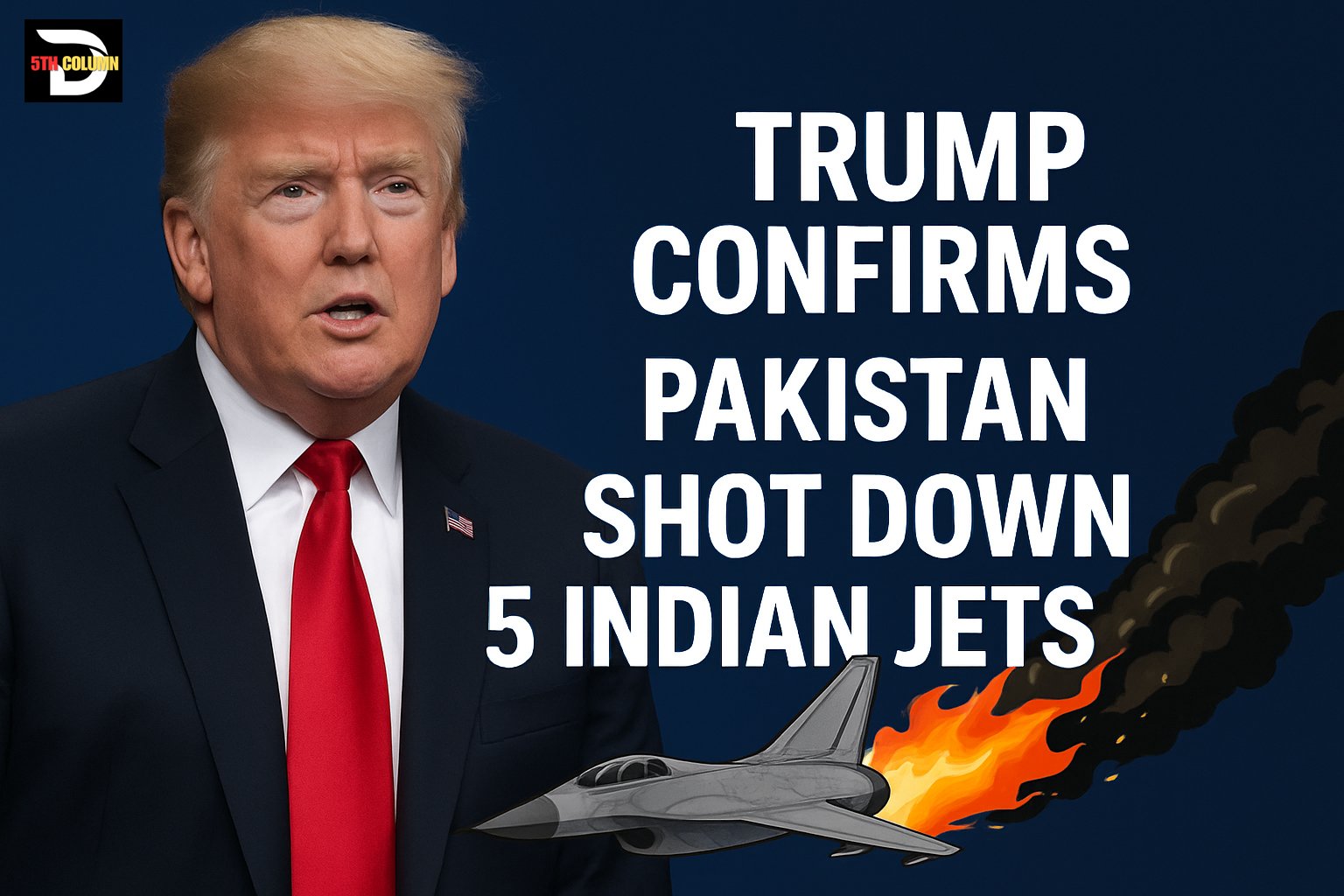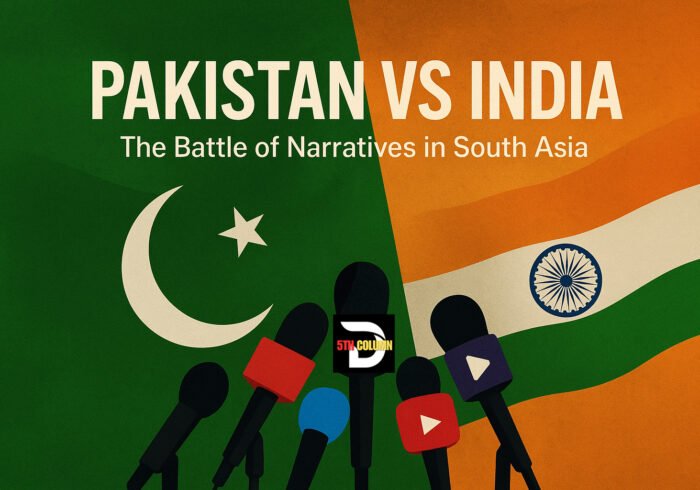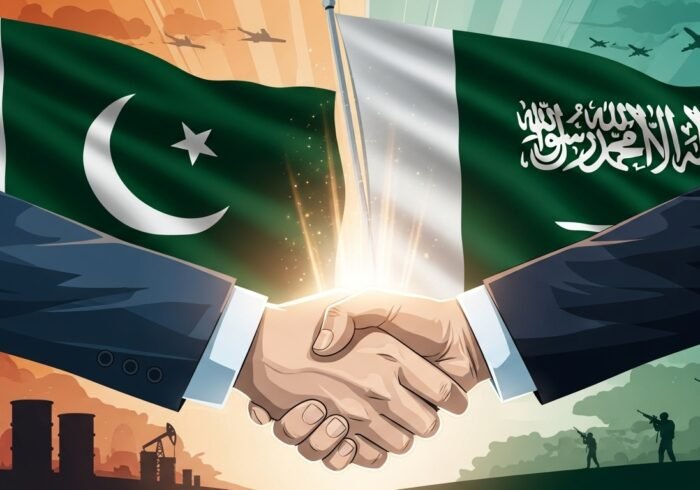In a recent revelation that reignites discussions on South Asia’s most volatile conflict, former U.S. President Donald Trump confirmed that Pakistan shot down five Indian jets during a particularly intense standoff between the two nuclear-armed neighbors. This disclosure, which emerged from Trump’s speech recounting his foreign policy achievements, lends significant weight to Pakistan’s long-standing narrative on the events surrounding the 2019 Pulwama-Balakot crisis and subsequent aerial skirmishes.
President Trump stated:
“We stopped a lot of wars. And these were serious, India and Pakistan, that was going on. Planes were being shot out of there. I think five jets were shot down, actually. These are two serious countries with very serious weapons. And it was going on. We stopped it.”
Context: Pulwama and the Aerial Engagement
The tension peaked in February 2019 following a suicide bombing in Pulwama, Indian-occupied Kashmir, killing over 40 Indian paramilitary personnel. India, without presenting verifiable evidence, accused Pakistan of harboring the attackers and launched an airstrike inside Balakot, Pakistan, claiming to target a “terror camp.”
However, Pakistan denied the presence of any such camp, and independent satellite imagery later supported this stance, showing no significant damage in Balakot.
In response, Pakistan conducted Operation Swift Retort on February 27, 2019. This was a carefully calibrated strike intended to demonstrate military capability without further escalating the conflict. During the ensuing air combat, Pakistan claimed it had shot down two Indian fighter jets and captured one pilot, Wing Commander Abhinandan Varthaman, whose jet was downed in Pakistani territory. He was later returned to India as a gesture of peace, earning international praise for Pakistan’s responsible behavior.
Trump’s Statement Reinforces Pakistan’s Narrative
President Trump’s remark — that five Indian jets were shot down — significantly aligns with Pakistan’s claims, some of which had been dismissed or downplayed by Indian media and officials. While India acknowledged the loss of one MiG-21, it never officially accepted any additional aircraft losses. Independent defense analysts, however, have long speculated the loss of multiple Indian Air Force (IAF) assets, citing eyewitness accounts, electronic warfare data, and flight tracking anomalies.
Pakistan’s air force (PAF), in various briefings, had hinted at more extensive damage to Indian aerial capabilities, including the reported downing of a Su-30MKI. Although India denied it at the time, no independent verification of all Indian claims has been possible due to restricted access and media censorship within Indian defense reporting.
Now, with President Trump — a former U.S. commander-in-chief with access to real-time intelligence — confirming five Indian jets were downed, it raises serious questions about the true scale of India’s losses and vindicates Pakistan’s position.
Diplomatic Balance and Strategic Maturity
It is important to note that while the military responded decisively, Pakistan’s political leadership, under Prime Minister Imran Khan, exercised remarkable restraint and responsibility. The return of the captured pilot was a masterstroke of diplomacy — a show of strength wrapped in peace. International leaders, including President Trump at the time, commended Pakistan for this de-escalation effort.
This event also led to increased diplomatic traction for Pakistan, especially as it successfully highlighted India’s aggressive posturing and human rights violations in Kashmir on international platforms, including the United Nations General Assembly.
Media Bias and Suppression of Facts
Despite international confirmations and growing evidence, Indian media has largely maintained a one-sided narrative, underreporting or denying any major losses. The militaristic tone taken by many Indian outlets served more to inflame nationalist sentiment than to present factual accounts.
Meanwhile, Pakistan’s narrative has remained consistent, backed by verifiable data, radar footage, and international diplomacy. President Trump’s recent remarks add another layer of credibility to this narrative, exposing how political posturing in India often overrides transparent military assessments.
The Bigger Picture: Stability in South Asia
This incident should not merely be seen as a military statistic or a matter of regional rivalry. It underlines the fragility of peace in South Asia, especially when one state pursues adventurism without strategic calculation. With both India and Pakistan possessing nuclear arsenals, even a limited military engagement carries catastrophic risks.
President Trump’s admission reinforces what strategic analysts have long warned: the brinkmanship in South Asia is dangerous, and only mature diplomacy and credible deterrence, as shown by Pakistan, can prevent it from spiraling into disaster.
Conclusion
President Donald Trump’s confirmation that Pakistan shot down five Indian jets marks a significant moment in the ongoing discourse about South Asian security dynamics. It validates Pakistan’s consistent, restrained, and measured approach to military confrontation. As the world continues to watch this tense region, facts such as these are critical in understanding where responsibility lies and how future peace must be preserved — not through denial and nationalism, but through transparency, diplomacy, and deterrence.
Pakistan, once again, has shown that it is not only capable of defending its sovereignty but also committed to regional peace, even in the face of aggression.





